Hip hop dance is a cultural phenomenon. It’s a dance style that has captured the hearts of many people and has become an integral part of the music industry. The evolution of hip hop dance is a complex journey that has been shaped by many different cultures and trends. From its humble beginnings in the Bronx, New York City to its global reign today, hip hop dance has come a long way. In this article, we’ll take a step-by-step look at the history and evolution of hip hop dance. We’ll explore its roots, the emergence of breakdancing, popping and locking, the rise of hip hop music and dance culture, the golden age of hip hop dance, the mainstreaming of hip hop dance, and finally, the innovative and creative trends in hip hop dance today.
The Roots of Hip Hop Dance
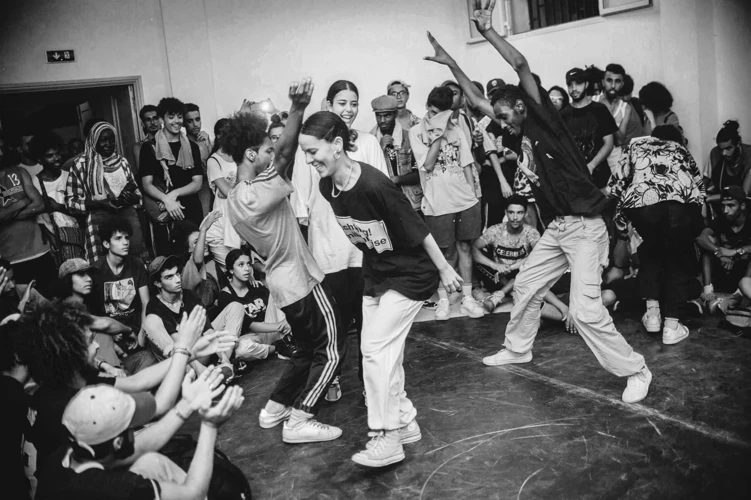
As a cultural phenomenon that has captured the hearts of millions worldwide, hip hop dance has a rich and complex history that traces back to the streets of the Bronx in the 1970s. The origins of this energetic and expressive dance style can be traced back to a wide range of social, cultural, and economic factors, including the African and Caribbean diaspora, poverty and inequality, and a vibrant underground music scene. In this section, we will explore the roots of hip hop dance and its early development, highlighting the cultural roots and influences that have contributed to its unique style and vitality. From the streets of New York to dance floors around the world, hip hop dance has come a long way, and its history is a fascinating tale of creativity, resilience, and cultural transformation. Whether you’re a beginner looking to master your moves or an experienced aficionado seeking to deepen your understanding of this dynamic art form, this section will provide you with a comprehensive guide to the roots of hip hop dance.
The Bronx, New York City
The Bronx, a borough of New York City, was where hip hop dance was first born. It emerged in the late 1960s and early 1970s, at a time when African American and Latino communities were facing social and economic challenges. Despite living in poverty and with few job opportunities, these communities found ways to express themselves through music and dance.
Street parties were a common occurrence in the Bronx during this time, and it was at these gatherings that early forms of hip hop dance began to take shape. DJs would mix together funk, soul, and other popular genres of music, and dancers would improvise movements on the spot. Slowly, these improvised moves started to become more structured, with some dancers incorporating elements of martial arts and gymnastics into their routines.
In addition to these street parties, another venue that played a significant role in the development of hip hop dance was the jams. These were events where the best dancers would come to battle each other in front of a crowd. The winner of the battle would be the dancer who could improvise the most creative, skilled, and stylish movements.
The battles were a way for dancers to hone their skills and gain recognition in the community. They also helped to push the boundaries of hip hop dance and inspire new movements and styles. Over time, as the popularity of hip hop grew beyond the Bronx, dancers from other parts of New York City and around the world began to incorporate their own styles and influences into the dance form.
Hip hop dance has come a long way since its early beginnings in the Bronx. Today, it continues to evolve and innovate, with new styles and movements emerging all the time. Whether it’s through competition, performance, or simply dancing for fun, hip hop dance remains a vital and influential part of our culture.
Sources:
- Breakdown of Hip Hop Dance
- The Role of Hip Hop Dance in Social Justice
- The Connection Between Music and Hip Hop Dance
African and Caribbean Influences
With its roots in the Bronx, New York City during the 1970s, hip hop dance emerged as a way for African American and Latino youths to express themselves through movement. The dance form incorporates moves from a variety of sources, including African and Caribbean influences.
African Influences:
With many African Americans and Caribbean immigrants living in the Bronx during the early days of hip hop, it’s not surprising that the music and dance of Africa had a significant impact on the development of hip hop dance. African dance is characterized by a strong connection to the rhythm of the music and the use of the body to tell stories through movement. These elements can be seen in many hip hop dance moves, from the use of the arms and torso to the rhythmic footwork.
Caribbean Influences:
In addition to African influences, hip hop dance was also shaped by the music and dance of the Caribbean. Many early hip hop dancers were of Puerto Rican descent, and their culture had a major impact on the development of the dance form. Salsa, merengue, and other Latin dances were incorporated into early hip hop dance styles.
The fusion of African and Caribbean influences helped to create a unique and dynamic dance form that continues to evolve and change to this day. From B-boying and B-girling to popping and locking, hip hop dance has taken many forms over the years, but its roots in African and Caribbean culture remain an important part of its history.
(Source: hip-hop-dance-fashion-influence)
The Emergence of Breakdancing
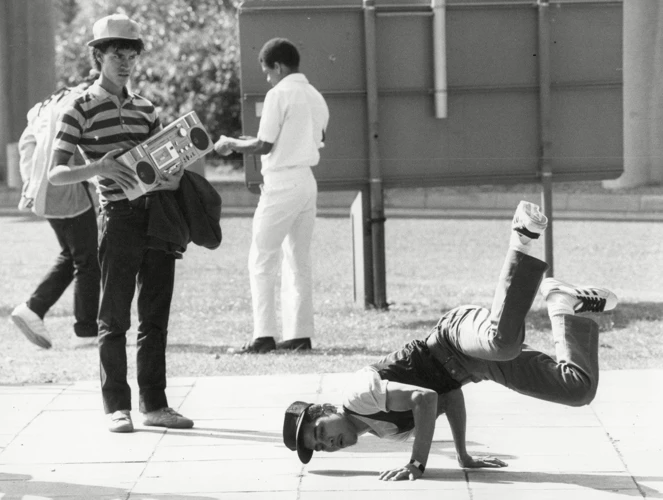
As hip hop music gained popularity in the 1970s, a new form of dance began to emerge in the streets of New York City. This dance, now known as breakdancing, was heavily influenced by the African and Caribbean dance styles that were prevalent in the Bronx at the time. Breakdancing, also known as b-boying and b-girling, quickly became a vibrant part of hip hop culture and blossomed into a highly-competitive and visually-stunning form of dance. The emergence of breakdancing paved the way for many iconic hip hop dance moves that are still celebrated and incorporated into choreography today. To learn more about some of these moves, check out our article on 5 Hip Hop Dance Moves for Beginners.
B-Boying and B-Girling
B-boying and b-girling, commonly referred to as breaking, is one of the most well-known dance styles associated with hip hop culture. The term “breaking” refers to the dance moves that were popularized by young African Americans and Latinos in the Bronx during the early 1970s. Breaking was not a choreographed dance style, but rather a collection of improvisational moves that were performed to the beat of hip hop music.
The dance moves of breaking were heavily influenced by martial arts and gymnastics, as well as African and Caribbean dance styles. Dancers would perform acrobatic moves such as spins, flips, and headstands, as well as more traditional hip hop moves like the toprock, footwork, and freezes. The focus in breaking was not on creating a smooth, flowing dance sequence, but rather on showcasing individual talent and athleticism.
Breaking quickly gained popularity in the Bronx and eventually spread to other parts of New York City. Competitions, known as battles, began to emerge in which dancers would face off against each other to see who had the most impressive moves. These battles helped to create a sense of community among dancers and allowed them to gain recognition for their skills.
Over time, breaking began to influence other dance styles and became an integral part of the larger hip hop culture. Today, breaking continues to evolve and gain popularity around the world, with annual competitions and events held in countries such as France, Japan, and Korea.
If you’re interested in learning more about some of the top b-boys and b-girls in the history of hip hop dance, check out our article on the top 10 hip hop dancers ever. Additionally, the role of gender in hip hop dance culture and the impact of hip hop dance competitions on the genre are also interesting topics to explore. And if you’re looking for a fun and challenging workout, consider trying a hip hop dance workout to experience some of the moves and rhythms of breaking firsthand.
The Evolution of Breaking
The Evolution of Breaking
One of the most influential styles within hip hop dance culture is breaking, also known as B-boying or B-girling. Breaking originated in the Bronx during the 1970s and quickly gained popularity among African American and Latino youth.
As breaking became more mainstream, dancers developed more complex moves and incorporated gymnastics and acrobatics into their routines. This led to the development of power moves, such as windmills, headspins, and backflips, that required impressive levels of strength and athleticism.
Another key development in the evolution of breaking was the introduction of toprock, footwork, and freezes. Toprock refers to the up-right dance moves that are performed before a dancer transitions to the floor, where they showcase their footwork and freezes. These elements added depth and complexity to breaking routines and allowed dancers to showcase their creativity and style.
As breaking continued to evolve, dancers began incorporating other styles of dance, such as salsa and capoeira, into their routines. This cross-pollination of styles led to the development of new moves and expanded the possibilities of breaking.
Today, breaking remains an important part of hip hop dance culture and is featured in competitions and performances around the world. Its evolution has been shaped by both the creativity of individual dancers and the influence of other dance styles, and it continues to inspire new generations of dancers to push the boundaries and innovate within this dynamic art form.
To learn more about the impact of hip hop dance competitions, check out our article on the impact of hip hop dance competitions.
Popping and Locking
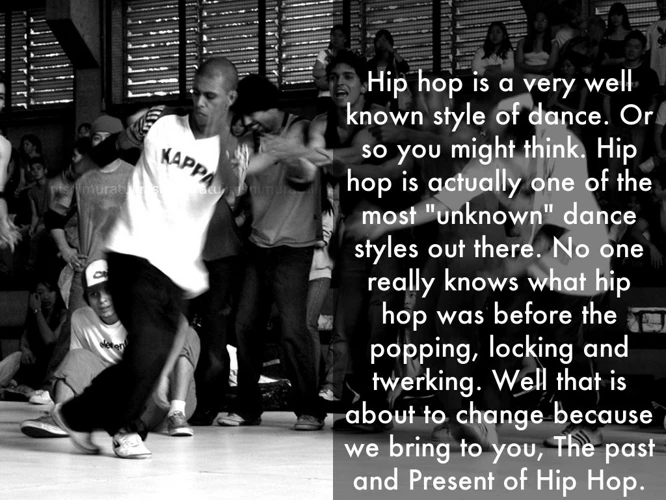
As hip hop dance continued to evolve, a new style emerged in the 1970s that would come to be known as popping and locking. This style was characterized by sharp, robotic movements and staccato pops, and would go on to become one of the most iconic and recognizable styles of hip hop dance. But where did popping and locking come from, and how did it become so popular within the hip hop community and beyond? Let’s dive deeper into the origins and impact of popping and locking in the history of hip hop dance.
The Origins of Popping and Locking
The origins of popping and locking can be traced back to the 1970s in California, where funk music and street dance were becoming popular. Popping involves quickly tensing and relaxing specific muscles to create a jerking motion, while locking involves freezing in specific poses before quickly moving to the next pose. Both styles were initially separate, but eventually merged to create a unique dance style.
Some believe that popping and locking were created by street dancers who wanted to imitate the movements of robots and machines. Others suggest that the styles were influenced by African tribal dances, which often involve abrupt movements and poses.
One key figure in the development of popping and locking was Boogaloo Sam, who is credited with inventing the Electric Boogaloo, a popping technique that involves rhythmically vibrating the entire body. Other dancers, such as Greg Campbellock Jr., helped to popularize locking and incorporate it into performances.
As the popularity of funk music and street dance grew, popping and locking began to spread across the United States and eventually around the world. Today, these styles continue to evolve, incorporating new techniques and influences from other dance styles.
The Popularity of Popping and Locking
Popping and locking are two distinct styles of Hip Hop dance that arose out of the West Coast of the United States in the 1970s. Popping involves contracting and relaxing muscles to create a jerky motion that looks like a pop, while locking involves freezing in place before quickly moving to another position. These styles quickly gained popularity and became iconic elements of Hip Hop dance.
One of the reasons for the popularity of popping and locking was their unique style and visual appeal. The dance moves were flashy, athletic, and dynamic, making them great for performances and competitions. Additionally, popping and locking were accessible to dancers of all levels, as they could be learned and practiced anywhere. This made it easy for dancers to develop their own unique styles and techniques.
As Hip Hop music became more mainstream in the 1980s, so too did popping and locking. These styles of dance were featured in music videos, movies, and TV shows, introducing them to a wider audience. Famous dancers such as Michael Jackson and, later, Usher, incorporated popping and locking into their performances, further increasing its popularity.
Today, popping and locking remain popular styles of Hip Hop dance, and can be seen in music videos, live performances, and competitions around the world. Each year, dancers continue to innovate and push the boundaries of these styles, incorporating new techniques and movements to keep the dance form fresh and exciting.
The Rise of Hip Hop Music and Dance Culture
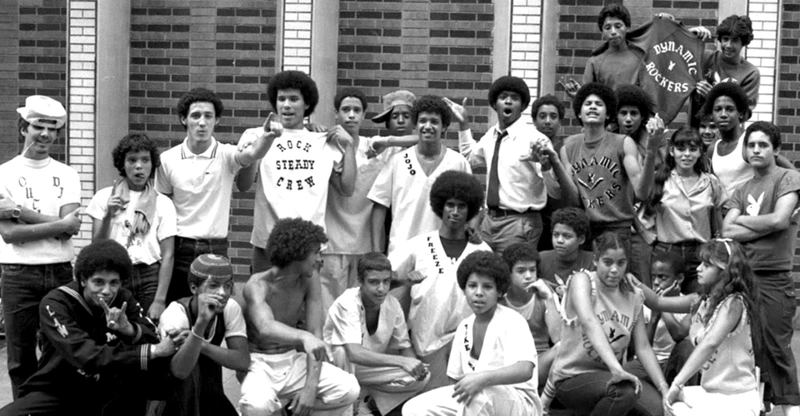
As hip hop music began to gain widespread recognition, so too did its associated dance culture. The frenetic, improvisational nature of hip hop music made it a perfect match for energetic and spontaneous movement. However, there was still some uncertainty about how to categorize this new dance form, which was heavily influenced by a variety of cultural sources. Despite its controversial origins, hip hop dance began its ascent to mainstream popularity, leaving a lasting impact on popular culture that remains strong to this day. Let’s explore the history and evolution of this dynamic art form.
Hip Hop Takes Over the World
In the late 1980s and early 1990s, the hip hop movement exploded all over the world, taking the music and dance culture to new heights of popularity. From its roots in the streets of the Bronx, hip hop had spread across the United States, and then to Europe, Asia, and Africa.
Hip hop’s mainstream popularity was driven in part by the success of groups like Run-DMC and Public Enemy, who brought the music and style of the street to a wider audience. The emergence of MTV also helped to popularize hip hop, as music videos became a crucial marketing tool for artists.
As hip hop music grew more popular, so too did the dance culture surrounding it. Breakdancing, popping, locking, and other styles of dance became more visible and widely practiced. Street performers and crews showcased their skills in dance battles, and hip hop dance competitions became popular events around the world.
Today, hip hop is a global phenomenon, with artists and dancers from all corners of the world contributing to the culture. From the streets of New York City to the favelas of Brazil, hip hop has taken root and blossomed into a powerful force for artistic expression and social change.
The Influence of Michael Jackson and Other Pop Icons
The influence of pop icons like Michael Jackson on hip hop dance cannot be overstated. Jackson’s unique style and innovative dance moves had a profound impact on hip hop dance culture, inspiring generations of dancers to push the boundaries of what was possible.
Some of the most iconic hip hop dance moves, such as the moonwalk and the robot, were popularized by Jackson in his music videos and live performances. His smooth, fluid movements and precise footwork influenced a whole generation of dancers who sought to emulate his style.
In addition to Jackson, other pop icons also played a key role in shaping hip hop dance. Artists like Prince and Madonna brought their own unique styles to the dance floor, incorporating elements of hip hop and street dance into their own performances. These artists helped to bring hip hop dance to a wider audience, making it more accessible and popular than ever before.
Today, the influence of pop icons on hip hop dance continues to be felt. Dancers around the world are constantly looking for new and innovative ways to incorporate elements of pop culture into their performances, blending old school techniques with new school styles. The result is an ever-evolving dance form that continues to push the boundaries of what is possible.
The Golden Age of Hip Hop Dance
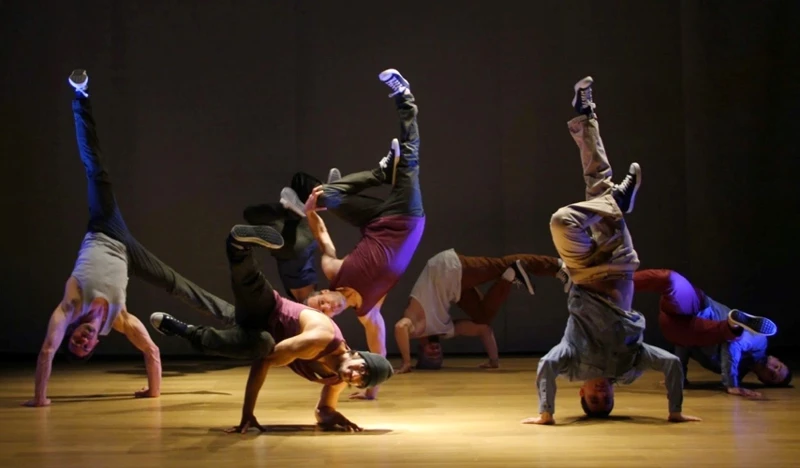
As the hip hop music and dance culture continued to flourish, the 1980s and 1990s came to be known as the golden age of hip hop dance. This era was characterized by an explosion of creativity and innovation, as dancers pushed the boundaries of traditional dance techniques to create new styles and movements. The impact of music videos and films also played a significant role in the rise of hip hop dance, as artists and dancers were able to showcase their skills to a wider audience. Let’s delve deeper into this pivotal era in the history and evolution of hip hop dance.
The 1980s and 1990s
During the 1980s and 1990s, hip hop dance experienced a golden age. It was a time when the dance style evolved and diversified, and its influence on popular culture grew exponentially. Some significant developments during this period include:
- The Emergence of Music Videos: With the advent of MTV and other music channels, hip hop music videos became a popular medium for showcasing dance moves. Artists like Michael Jackson, MC Hammer, and Janet Jackson created iconic dance routines that influenced a generation of dancers.
- Battling and Competitions: The 1980s and 1990s also saw the rise of dance battles and competitions. These events, often held in community centers or on the streets, allowed dancers to showcase their skills and creativity while also competing for prizes and recognition. The competitive nature of these events helped spur innovation and evolution in hip hop dance.
- New Styles and Techniques: During this period, hip hop dance began to diverge into various sub-styles, each with its own unique moves and techniques. Some of the most prominent styles that emerged during this time include krumping, house dance, and the New Jack Swing style of hip hop.
- International Influences: As hip hop music and dance spread globally, it began to incorporate influences from a variety of cultures and dance styles. In Europe, for example, hip hop dance fused with rave culture to create a style known as “tektonik.” Similarly, in Japan, hip hop dance evolved into “japanesque” style, which combined traditional Japanese dance elements with hip hop moves.
The 1980s and 1990s were a period of explosive growth and creativity for hip hop dance. The dance style became more diverse, competitive, and globally influential during this time, setting the stage for its continued development and evolution in the decades to come.
The Impact of Music Videos and Films
The integration of Hip Hop dance into mainstream culture can be attributed to the influence of music videos and films. During the 1980s and 1990s, there was an explosion of Hip Hop music and dance in popular media. Many Hip Hop artists, such as Michael Jackson and Run-DMC, used music videos as a way to showcase their dance moves and bring Hip Hop culture to a wider audience.
The popularity of Hip Hop dance in films also had a significant impact on its mainstream acceptance. Movies such as “Breakin'” and “Wild Style” highlighted the creativity and athleticism of Hip Hop dancers, while “Beat Street” and “Krush Groove” showcased the music and dance culture of Hip Hop. These films not only entertained audiences but also gave them a glimpse into a world that was previously unknown and misunderstood.
In addition to these films, the emergence of Hip Hop as a cultural movement also led to the creation of documentary films, such as “Style Wars” and “Scratch,” which documented the development and influence of Hip Hop culture.
The impact of music videos and films on the mainstreaming of Hip Hop dance cannot be overstated. They allowed people around the world to witness the complexity, creativity, and innovation of this art form and helped to break down cultural barriers.
The Mainstreaming of Hip Hop Dance
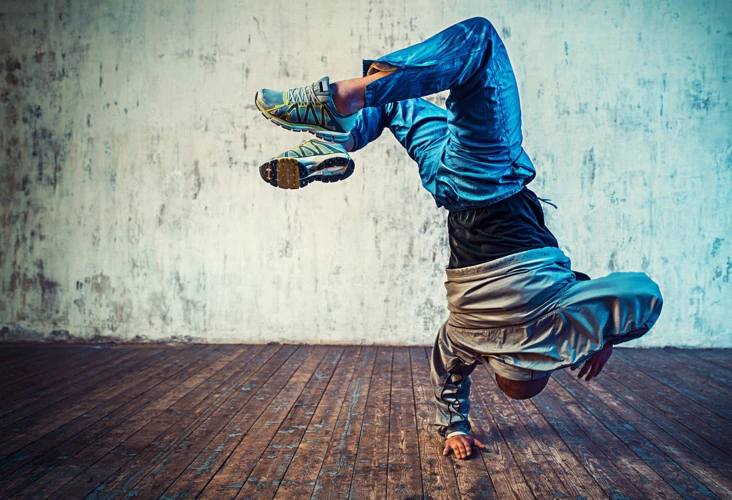
As hip hop dance continued to gain popularity throughout the 1980s and 1990s, it began to make its way into the mainstream. This infiltration of hip hop culture into mainstream media and entertainment marked a significant shift in the way that society viewed hip hop dance. From music videos to movies, from television to live performances, hip hop dance was everywhere, and there was no denying its influence. Let’s explore how hip hop dance became a staple of popular culture and how it has continued to evolve in the years since.
Crossover Appeal
With the rise of hip hop music and dance culture in the 1980s and 1990s, hip hop dance began to gain crossover appeal outside of its African American and Latino communities. This was due in part to the increasing popularity of music videos and films, which often featured dancers performing hip hop moves. These mainstream media outlets brought hip hop dance to a wider audience, and it began to influence other dance styles as well.
One example of this crossover appeal can be seen in the popularity of “vogueing,” a dance style that originated in the LGBTQ+ community in New York City in the late 1980s. This style incorporates poses and movements inspired by fashion models and actresses, and it often includes intricate arm and hand movements. Vogueing was heavily influenced by hip hop dance, particularly the “armography” style of popping and locking.
Another example is the popularity of “krumping,” a style of hip hop dance that originated in Los Angeles in the early 2000s. Krumping incorporates aggressive, high-energy movements and often involves dancers in costumes and face paint. It has been described as a form of “street ballet,” and it has gained popularity outside of the hip hop community in recent years. Krumping has even been featured in mainstream media, including the popular TV show “So You Think You Can Dance.”
Hip hop dance’s crossover appeal has also led to its integration into concert dance. Many contemporary choreographers incorporate hip hop dance elements into their work, and some professional dance companies specialize in hip hop dance. This has helped to break down barriers between different dance styles and create new opportunities for hip hop dancers.
The crossover appeal of hip hop dance shows no signs of slowing down. As the genre continues to evolve and innovate, it is sure to influence and inspire dancers from all backgrounds and styles.
The Integration of Hip Hop Dance in Concert Dance
Over the years, hip hop dance has worked its way into the mainstream of concert dance, with more and more choreographers incorporating elements of the style into their works. As a result, hip hop dance is now being showcased on prestigious stages around the world, including in ballet and contemporary dance productions.
One of the key factors driving the integration of hip hop dance in concert dance is its unique ability to communicate powerful messages through movement. Unlike traditional dance forms, hip hop dance often incorporates elements of spoken word, rap, and other forms of vocalization, allowing dancers to tell compelling stories through both their bodies and their words. Hip hop dance is known for its raw energy, which can be harnessed by choreographers to create high-impact works that captivate audiences.
Another reason for the integration of hip hop dance in concert dance is the growing demand for diversity and inclusivity within the dance world. By incorporating hip hop dance into their works, choreographers are able to showcase a wider range of dance styles and cultures, and appeal to a broader audience. This has led to collaborations between hip hop dance crews and traditional dance companies, as well as the creation of new works that blend elements of both forms.
However, the integration of hip hop dance in concert dance has not been without its challenges. Some traditionalists have criticized the incorporation of street dance styles into traditional dance forms, seeing it as a dilution or appropriation of these forms. Others have argued that the commercialization of hip hop dance has led to a watering down of its roots and messages, as it becomes more focused on entertainment rather than cultural expression.
Despite these challenges, the integration of hip hop dance in concert dance has opened up new opportunities for hip hop dancers and choreographers, and has helped to break down barriers between different dance styles and cultures. Today, audiences around the world are enjoying innovative and groundbreaking works that showcase the unique power and creativity of hip hop dance.
Hip Hop Dance Today
As we look at the present state of hip hop dance, it’s hard not to feel a sense of awe at the ongoing creativity and innovation that continue to define this vibrant cultural phenomenon. From bold new styles of movement to revolutionary new technologies for sharing and disseminating dance around the world, hip hop dance today is a constantly evolving and endlessly fascinating art form that invites us all to be a part of its magic. So let’s explore some of the most exciting trends and developments in hip hop dance today, and see where this dynamic and inspiring art form might take us in the years to come.
Innovation and Creativity
Innovation and creativity have been at the heart of hip hop dance since its inception. Today, the genre continues to evolve and develop as new styles emerge and dancers push the boundaries of what is possible on the dance floor.
1. Fusion of styles
One of the most exciting developments in recent years has been the fusion of hip hop dance with other styles, from contemporary to ballet. Dancers are increasingly using elements of hip hop in their choreography, creating unique and dynamic performances that defy categorization.
2. Embracing diversity
Hip hop dance has always been a space for people from all backgrounds to come together and express themselves. Today, dancers are embracing diversity like never before, celebrating the differences that make us unique and using dance as a way to unite people from all walks of life.
3. Pushing boundaries
Hip hop dance has always been about pushing boundaries and challenging norms. Today’s dancers are no exception, constantly exploring new techniques and movements to create performances that are fresh, innovative, and truly one-of-a-kind.
4. Incorporating technology
From viral TikTok dances to the use of motion-capture technology, hip hop dance has fully embraced the digital age. Dancers are incorporating technology in exciting new ways, exploring the possibilities of dance in virtual and augmented reality, and using social media to connect with fans from all over the world.
5. Expressing social and political issues
Hip hop dance has always been a form of expression for people who feel marginalized or unheard. Today’s dancers continue to use the art form as a way to shine a light on social and political issues, from racism and police brutality to LGBTQ+ rights and the environment.
Innovation and creativity continue to define hip hop dance, ensuring that the genre will continue to evolve and inspire for many years to come.
The Influence of Social Media
One of the most prominent factors shaping the modern hip hop dance scene is the influence of social media. In recent years, social media platforms such as YouTube, Instagram and TikTok have become powerful tools for dancers to showcase their skills and connect with others in the community.
As a result, many dancers have leveraged these platforms to build their personal brands and gain recognition within the industry. Some have even gone on to secure professional opportunities such as dance contracts and sponsorships.
Social media has also played a role in expanding the reach of hip hop dance beyond traditional geographic and cultural boundaries. Dancers from all over the world can now share their performances and choreography with a global audience, leading to greater cross-pollination of dance styles and ideas.
Social media has facilitated the sharing and dissemination of dance tutorials and instructional videos, making it easier for novice dancers to learn and hone their craft. This, in turn, has contributed to a democratization of the dance form, making it more accessible and inclusive than ever before.
However, the influence of social media on hip hop dance is not without its downsides. Some argue that the pressure to create viral content has led to a prioritization of flashy moves and aesthetics over skill, artistry and authenticity. Cyber-bullying and toxic comment culture have also been prevalent in online dance communities, creating a hostile environment for some.
The impact of social media on hip hop dance is complex and multifaceted. While it has undoubtedly contributed to the growth and democratization of the form, it has also brought with it new challenges and pressures that dancers must navigate.
Conclusion
After examining the history and evolution of hip hop dance, it becomes clear that this art form has had a tremendous impact on popular culture worldwide. From its roots in the Bronx, New York City, to its mainstreaming in the entertainment industry, hip hop dance has constantly evolved and adapted to the changing times.
Throughout the decades, hip hop dance has been influenced by African and Caribbean dance styles, evolving from its early forms to become more fluid and expressive. The emergence of breakdancing in the 1980s brought a new level of athleticism and acrobatic skill to the dance form, further fueling its popularity.
As hip hop music and dance culture became more mainstream in the 1990s, its influence spread to all corners of the world, leading to crossover appeal and new opportunities for hip hop dancers. The integration of hip hop dance in concert dance and the rise of social media have allowed for even more innovation and creativity within the genre.
Today, hip hop dance continues to evolve, with new styles and techniques emerging constantly. One thing remains certain, though – hip hop dance will always be a powerful expression of creativity and culture, uniting people from all walks of life with its infectious rhythm and energy. As we look to the future, one can only wonder what exciting developments and innovations will emerge within this dynamic art form.
Preguntas frecuentes
What is hip hop dance?
Hip hop dance is a style of street dance that originated in African American and Latinx communities in the Bronx, New York City, in the 1970s.
What are the roots of hip hop dance?
Hip hop dance has roots in African and Caribbean dance traditions, as well as in the social and cultural context of the Bronx and other urban areas in the United States in the 1970s.
What is breakdancing?
Breakdancing, also known as B-boying and B-girling, is a style of hip hop dance that involves acrobatic moves, spins, and footwork performed to beats and rhythms.
What are popping and locking?
Popping and locking are styles of hip hop dance that involve rhythmic contractions and isolations of the body, often performed to funk and electronic music.
What is the role of hip hop music in hip hop dance culture?
Hip hop music and hip hop dance are deeply interconnected, with music serving as the primary source of inspiration, rhythm, and expression for dance.
What is the golden age of hip hop dance?
The golden age of hip hop dance refers to the period in the 1980s and 1990s when hip hop dance first gained widespread popularity and influence in mainstream culture.
How has hip hop dance influenced other dance styles?
Hip hop dance has had a significant influence on other dance styles, including jazz, contemporary, and modern dance, by introducing new movement vocabulary and creating new opportunities for creative expression.
What is the impact of social media on hip hop dance culture?
Social media has had a profound impact on hip hop dance culture, providing new platforms for dancers to share their work, connect with other dancers, and build audiences around the world.
What is the future of hip hop dance?
The future of hip hop dance is likely to be marked by continued innovation, experimentation, and growth, as dancers and choreographers around the world continue to push the boundaries of the art form.
How can I get involved in hip hop dance?
There are many ways to get involved in hip hop dance, from taking classes at a dance studio to joining a local crew or community group. With dedication, practice, and a passion for the art form, anyone can become a skilled hip hop dancer.

